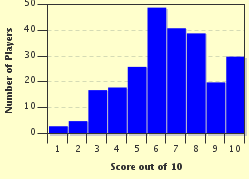Quiz Answer Key and Fun Facts
1. We start our tour in Romania, where Europe's second longest river empties in the Black Sea. Which river is this?
2. We leave Romania and enter Ukraine to visit a city on the shores of the Black Sea. This city played a role in the mutiny of the battleship Potemkin and had to endure the massacre of its Jewish inhabitants in WWII. What's the name of this city?
3. Next we visit Yalta, a city where history was written when Roosevelt, Churchill and Stalin met there in 1945 to discuss post-war Europe. Yalta is located on a peninsula where a major war was fought in the 19th century. Which peninsula is this?
4. From Yalta we continue our trip eastwards. We'll take a ferry to cross the Strait of Kerch and enter Russia. The Strait of Kerch connects the Black Sea with the shallowest sea in the world. It borders mainland Ukraine in the north and Russia in the east. Which sea is this?
5. To continue our journey we now have to cross a mountain range that stretches from the Black Sea to the Caspian Sea, and marks part of the boundary between Europe and Asia. Which mountain range is this?
6. We enter a region on the eastern Black Sea coast that declared its independence form Georgia in 1992. Although Georgia considers this region part of its territory, it functions as a de facto independent state. Which region is this?
7. In ancient Greek times, the region that corresponds to the western part of modern Georgia was the mythical land where Jason and the Argonauts are said to have searched for the Golden Fleece. What is the name of this ancient region?
8. Our next destination is Turkey where we head for the only city in the Turkish Black Sea region that is on the UNESCO heritage list. The name of this city refers to a spice that was traded there. Which city is this?
9. A tour around the Black Sea wouldn't be complete without a visit of Istanbul. This city is divided by a strait that connects the Black Sea with the Sea of Marmara. What is the name of that strait?
10. So far we've travelled through Romania, Ukraine, Russia, Georgia and Turkey. Our final destination is the sixth and last country that borders the Black Sea. Which country is this?
Source: Author
AlonsoKing
This quiz was reviewed by FunTrivia editor
Pagiedamon before going online.
Any errors found in FunTrivia content are routinely corrected through our feedback system.


